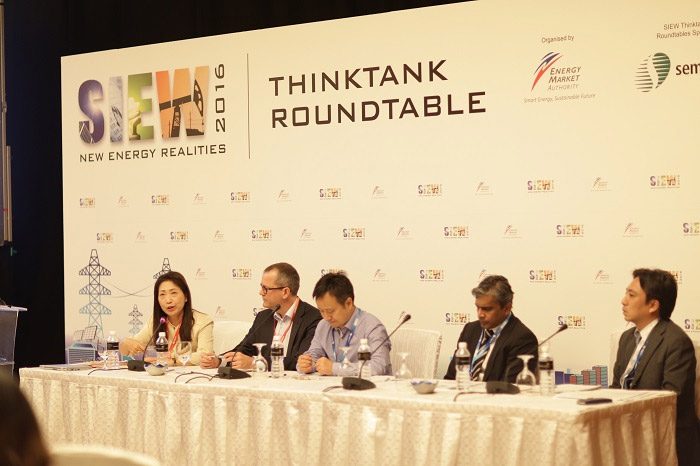
By Lai Su Lyn
Rapidly evolving market dynamics and pricing changes in the LNG industry have opened a unique window of opportunity to revisit the traditional characteristics LNG contracts, concluded panellists at a roundtable hosted by The Institute of Energy Economics, Japan (IEEJ) at Singapore International Energy Week (Week) on the “Outlook on Asian LNG: Market Dynamics and Pricing”.
Natural gas is anticipated to “stay as our future, irrespective of the uptake of renewables”, declared Damien Criddle, founder and CEO of LNG trading platform GLX. In fact, a quarter of global primary energy consumption by 2040 is expected to be fuelled by natural gas, said Yukari Yamashita, Director, IEEJ.
Looking forward, traditional long-term oil-indexed contracts face an increasing number of challenges from volatile oil prices and the need for greater flexibility in today’s market. For example, the uncertainty surrounding nuclear restarts in Japan, one of the largest buyers of LNG globally, is driving the move away from traditional long-term oil-indexation of LNG contracts. Sendai Units 1 and 2, and Ikata Unit 3, came back online last year following the shutdown of nuclear plants in Japan after the 2011 Fukushima crisis. This slowed Japan’s demand for LNG to fuel natural gas power plants. Political will and societal acceptance in Japan for further restarts is still unclear.
The introduction of many smaller independent oil and gas producers has further fragmented the oil and gas industry.
These have been crucial drivers in the transition towards smaller, shorter-term contracts. To achieve this transition, the industry must first develop three key areas: a credible LNG price index, increased gas-on-gas competition, and more flexibility in the legal drafting of LNG contracts.
“From the utilities point of view, having an index that is not linked to a physical trade is something very difficult to accept,” said Keita Enjoji, Head of LNG for Tokyo Gas Asia, when noting the challenges of forming a liquid LNG price index in the region.
“A successful price index must be “reliable, credible, transparent and liquid,” added Nandukumar Ponniya, Principal at Baker & McKenzie. While Singapore holds an advantage as a trusted hub for oil trading, this has not yet translated into a successful LNG trading hub.
Other crucial developments required a transition away from long-term oil-indexation of LNG contracts; the inclusion of gas-on-gas competition, which Japan will be enhancing via the introduction of gas retail market reform by 2017; and a restructuring of the gas pipeline regulations by April 2022, said Enjoji.
Legally, Ponniya said that the transition would also be facilitated by new contracts which remove the onerous destination-closed and Take-or-Pay clauses in today’s traditional contracts, and include price review clauses for greater price and volume flexibility.
Nevertheless, barriers remain high for the LNG industry’s transition, as the creation of a regional LNG price index faces substantial challenges in the form of diverse economic and geopolitical circumstances for countries, even within Asia. Existing long-term contracts also pose a significant difficulty for price formation, as the art of price discovery remains elusive for the LNG industry.
In the short term, Punniya sees an opportunity for regional LNG indices to enter the fray by providing price diversification for large portfolio players. Despite the challenges facing this transition away from traditional LNG contracting strategies, Criddle concluded that market dynamics and low oil prices mean that “the door is open for the discussion – this is the moment to be had.”